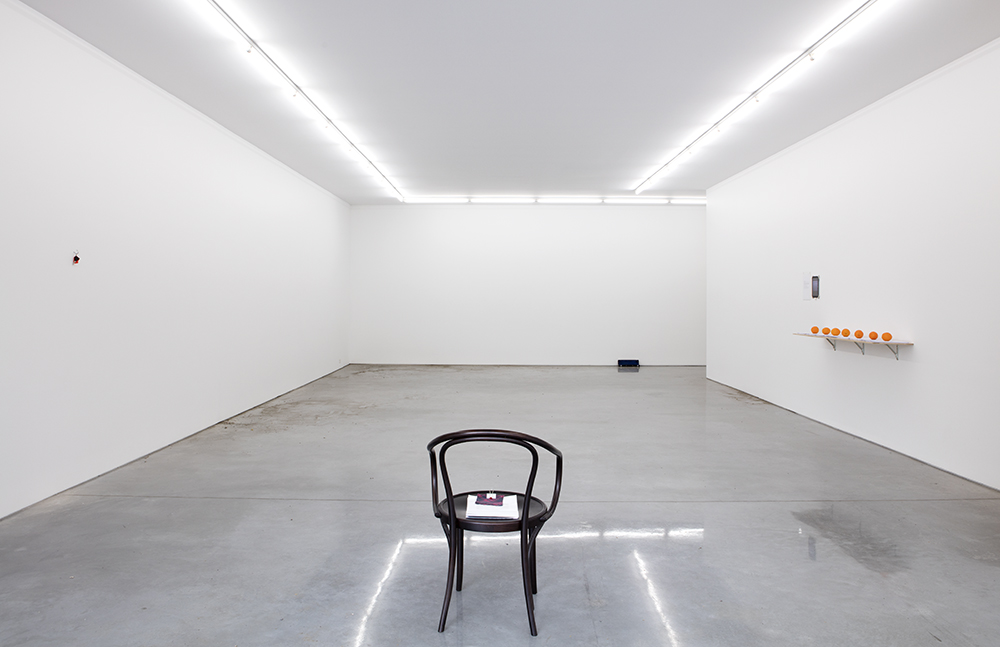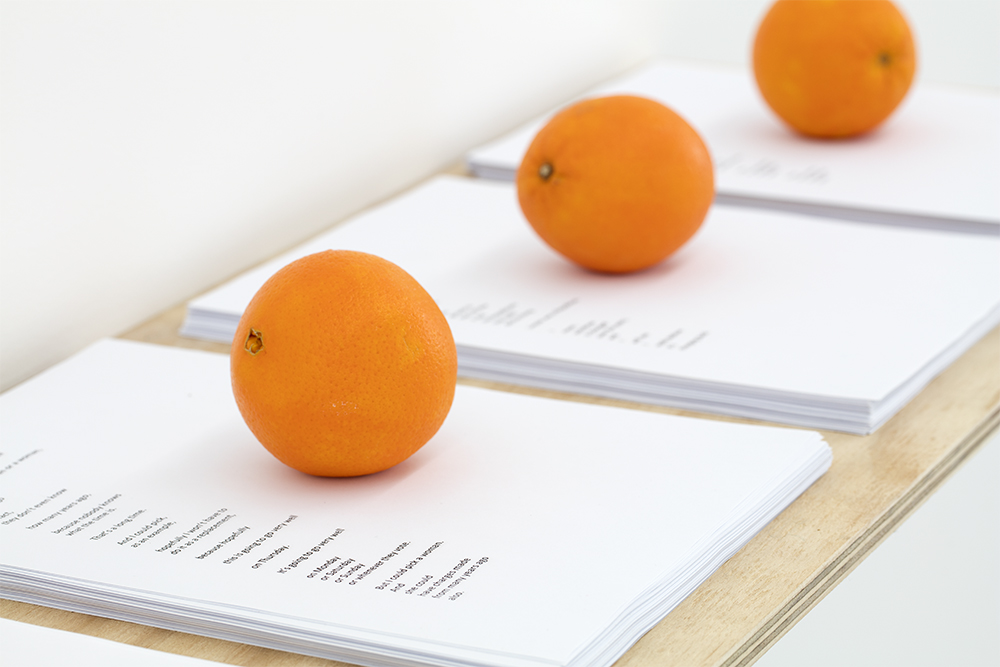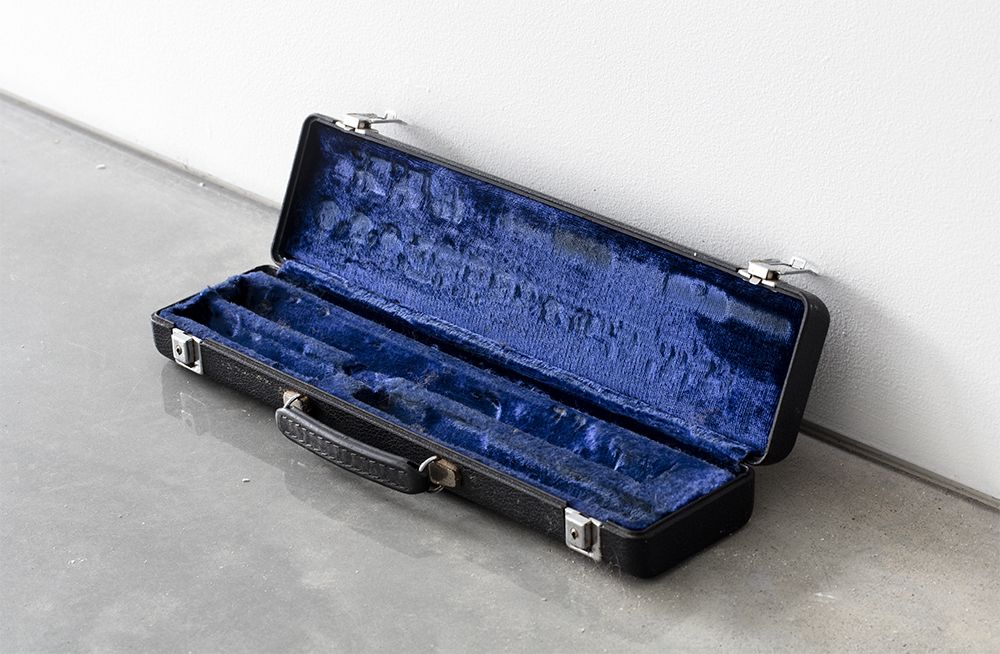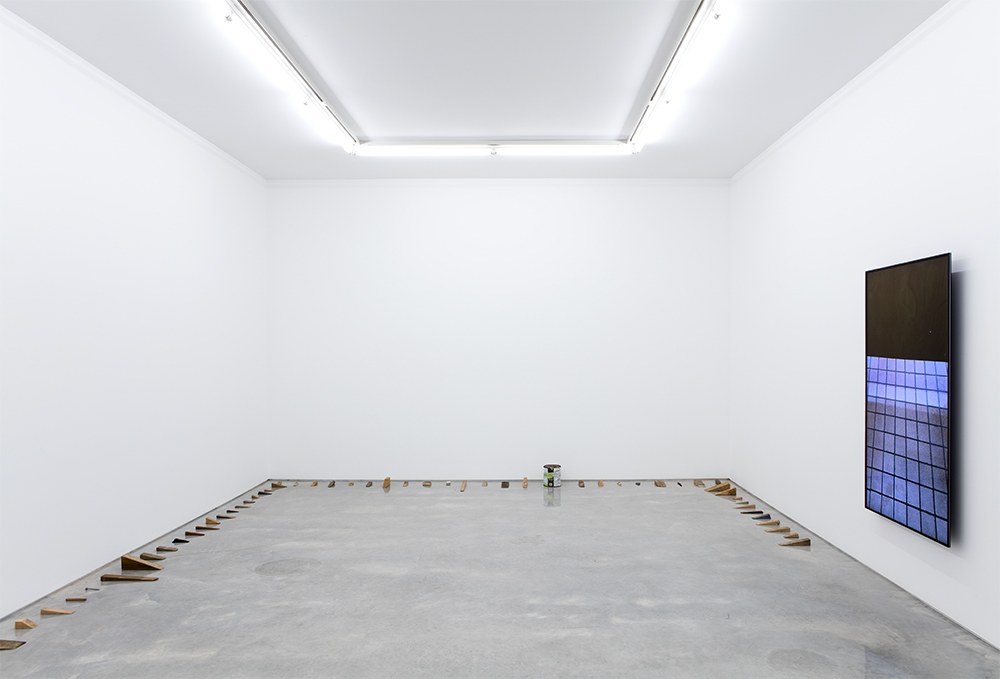Contemporary Recalcitrants

By Naomi Riddle
19 July, 2019
‘Recalcitrant’ is one of those four syllable words that’s fun to say out loud. It’s a mouthful of stones, a jumble of hard-edged consonants that mimic the word’s definition: disobedient, difficult, wayward, wilful, and above all, uncooperative. Contemporary Recalcitrants, curated by James Gatt, brings together the works of Christopher Hanrahan, Anthony Johnson, Elizabeth Pulie and Tony Schwensen—four mid-career artists who deal in differing modes of refusal and unco-operability.
At a time when the marketplace dictates so much in the world of contemporary art, Contemporary Recalcitrants speculates on how art might function in a post-capitalist future. Gatt is undoubtedly influenced by the conceptual artists of the 1960’s and 1970’s, and their desire to produce a non-material artform that could avoid commercialisation. But Contemporary Recalcitrants takes these earlier preoccupations and places them in our hyper-capitalist present: an era defined by exploitative economics, the mainstreaming of oligarchy, and a new precariat class. In a sign of commitment to the show’s principles, none of the works on display can be purchased via financial means. Instead, each of the artists offers an alternative mode of exchange. How do we conceive of a transaction, asks Gatt, if money no longer holds sway?
Christopher Hanrahan’s ‘Letters (to James)’ (2019) sits on a bentwood armchair at the entrance to the gallery. Gatt approached the USA-based Hanrahan with an idea for a collection of steel sculptures, but Hanrahan eschewed this directive and offered an alternative: he would send Gatt a letter a day by mail. (The US postal service has also proved itself well versed in the methods of the recalcitrant, with the letters arriving sporadically, sometimes in groups, and with long gaps between them.)
Hanrahan’s correspondence documents how artistic impulse meanders, spins, and contradicts itself, but it also serves as an entrant to the themes of the exhibition: What does it mean to manufacture objects as art? What to do with this making as not-making, this producing as not-producing? And what of the everyday and its accidental aesthetics, which still appear throughout Hanrahan’s correspondence, be it via photographs or transparencies or the placement of liquid paper?
There’s also the presence of the inviting chair, which has the (accidental?) function of turning the sitting reader into an object—the kind of static sculpture Hanrahan chose not to display.
Sitting adjacent to Hanranhan’s letters is Tony Schwensen’s ‘Trump Poems’ (2015-ongoing), an installation which is exactly as its title suggests: a collection of poems constructed out of Donald J. Trump’s speeches, interviews and Tweets. Earlier iterations of this work relied on performance, with a group of poems being read to an audience. But, in this instance, Schwensen displays seven written poems on a shelf, each weighed down by a single bright orange. Next to these texts is an iPad, and if you wish to take one of these poems away with you, Schwensen asks that you record yourself reading the text out loud. That is, Schwensen is interested in how we vocalise Trump’s language in our own voice: what ruptures occur when his pronouncements are embodied in, and disseminated by, a collective.
The work’s premise is similar to the recent live readings of the Mueller Report, or Daniel Dale’s ongoing project to list every time the 45th President of the United States lies in office (as of writing, the number stands at 5,276). Cataloguing or annunciating this onslaught of information becomes a strategy against the dulling of the senses. If the Trump Administration—like the Morrison government—seeks to weaponise the erasure of detail (refusing access to detention centres, climate data, policy details, witness reports to the special counsel & c.), then refusal comes in the act of recording and attending to such information, whether it be via Tweets, lies, testimony, temperature increases, or allegations of sexual assault.

Tony Schwensen, Trump Poems, (2015-ongoing), detail
inkjet prints on paper, ipad, oranges installed dimensions variable
image courtesy the artist and Sarah Cottier Gallery
But for all Schwensen’s ‘Trump Poems’ are about vocalisation, they also expose our response to words arranged as poetry on a printed page. Reading Trump’s words as lyric poems means they are bestowed with a kind of circular logic (‘And/ do you know/ whose boat/ that is?/ They/ don’t know/ whose boat/ that is’). Fascist vitriol becomes sanitised (‘I said maybe/ you do it/ without the doors’), and the raging unbound id of the Twittersphere transforms into a placid, meditative, and pithy ‘I’ (‘I/ mean/ somehow/ it changed/ over the years,/ and/ I/ will say/ I really believe/ it’s/ changing back’). With our willingness to parse how language works in poetry, and to feel soothed by line breaks and rhetorical flourishes, we slip into calm acquiescence. Underpinning each of these ‘Trump Poems’ is an indictment of this instinctive response: in reading it, in laughing at it, in shaking our heads at the ridiculousness of it, we become complicit. Poetry, and its devices, are not innocent. And, for me, the effectiveness of Schwensen’s work comes not from speaking Trump’s words aloud, but in the subtle interrogation of the aesthetics of language.
While Hanrahan and Schwensen place text at the centre of their works, Anthony Johnson focuses his attention on the discarded object: salvaging, stealing and repurposing items that have been lost or taken for granted or ignored. And, like most of us, these objects function by virtue of their precarity. A red-tagged key hangs on a hook as part of ‘Entrance door locks changed to fit a key retrieved from a written-off luxury sports car’ (2019), while ‘Not a breath of wind – a wind instrument ground to dust, scattered across the floor’ (2019) sees the detritus of a pulverised flute dispersed across the gallery’s polished floor. It’s Kosuth’s chair taken to the extreme: is a wind instrument still a wind instrument when it moves as dust through air? In the second gallery sits ‘Door-stops removed from propped doors of art institutions’ (2012-ongoing)—a group of doorstops Johnson has found, and then taken, from a surprising number of open gallery doors. Viewed together, the collection shows an array of doorstops in all shapes and sizes: there are small white rubber nubs, classic wooden wedges, and rounded bits of rusted metal. If you wish to keep one, you must prove that you are a worker in the same institution as the lifted doorstop.

Anthony Johnson, Not a breath of wind – a wind instrument ground to dust, scattered across the floor (2019)
flute case, flute
Image courtesy the artist and Sarah Cottier Gallery
Johnson’s work is sharp, sweet and clever, and it’s a testament to Gatt’s skill as a curator that he gives Johnson—the only artist in the exhibition not represented by the gallery—the space to sprawl. These are all works whose affect multiplies over time. The objects are only the starting point, as their potential as metaphors or metonyms turns them into escape hatches for meaning. (An example: the institutional doorstop as wedge, as imposer of order, as the means of access, as a marker of budget, as the artist, as the viewer, as the curator, or as the indentured labourer.) There is, as the artist suggests, a cinematic quality to each of the works, even if their presentation is simple. We cannot help but imagine the previous lives of these objects—the drama of Johnson bending over to remove a paint can (!) from an open door without being flagged down, or the exact circumstances behind the written-off luxury sportscar.
Elizabeth Pulie’s ‘EP’ (2019) hangs above Johnson’s doorstops. The video-work offers a bookend to Hanrahan’s opening piece, in that it is also constructed out of slices of the artist’s everyday life. ‘EP’ consists of the phone recordings Pulie has taken when urinating in bathrooms. The camera mimics Pulie’s point-of-view, so what we see are bathroom stall walls, or tiles, or a concrete floor. While the body is distanced or absent from the other works in the gallery, Pulie’s work provides a full stop that grounds the exhibition in the corporeal. Like Johnson, the meaning of Pulie’s work is multiple: it highlights the abstract aesthetics of bathrooms just as much as it discloses, and even revels in, the taboo of listening to female urination. ‘EP’ also demonstrates how exposure can function as refusal. Although it is a different mode of cataloguing and recording to that of Schwensen, it still contains a similar belief in the act of attention, and how such attention can jostle or undo our propensity to accept things as they are.
But, it has to be said, there is also an unattributed fifth artist in this show—the gallery space itself. The fact that difficult, unsaleable work is occupying prime commercial-gallery-real-estate is what gives Contemporary Recalcitrants its complexity. (A scene I take great pleasure in imagining is a collector being told they cannot take home Johnson’s car key unless they possess the skills of a locksmith, for all they might want to offer cash.) That a commercial gallery in Sydney would give up an entire month of revenue for a show wishing to push against market-driven impulses is, quite frankly, astonishing. It also functions as a counter response to those who claim it is not worthwhile engaging with commercial gallery shows because their motives are purely for profit.

(L) Anthony Johnson, Door-stops removed from propped doors of art institutions, (2012-ongoing)
(R) Elizabeth Pulie, EP (2019)
Image courtesy the artists and Sarah Cottier Gallery
That’s not to say staging an exhibition like Contemporary Recalcitrants should be such a rare act, or even that it should be so very much applauded, particularly given galleries now have the ability to push online sales and reach buyers outside their walls. But it does demonstrate the possibility of commercial galleries utilising such spaces in transgressive ways. These galleries are not institutions or artist run spaces, and this gives them a different type of freedom, one which we can, and should, demand more of.
Contemporary Recalcitrants is not without its faults. Conceptual work is often charged with being too opaque, and a full appreciation of the exhibition may not require an investment of capital, but it does require an investment of time. I still have a series of questions buffeting up against one another in my head: whether any work in a commercial gallery turns itself into an aesthetic product, even if it wishes to resist this charge / who, out of all us, has the privilege and the freedom to be so uncooperative / & whether these gentle, hesitant and muted offerings of a post-capitalist future are exactly the type of forms that late-capitalism not only tolerates, but willingly co-opts back into the marketplace. And, actually, should any of these questions matter anyway when the word that I reach for when describing spending time in front of Johnson’s doorstops is delight?
Mostly what I enjoy about this exhibition is the absence of being told how to think and feel, and of standing in a space where meaning is not proscribed. The show is the opposite of didactic: nothing is closed, and none of the artists appear interested in dictating the terms. Gatt avoids lengthy exposition, which encourages the generous sensation of sitting with ideas rather than digesting them. The consequence of this is that as soon as I find a discomfort, I also find a riposte.
This is all to say I don’t know how I feel about this show. I will not be offering what it seems most of us crave: a clear position on the exhibition’s successes and failures. But it is this indecision, this open-endedness that makes Contemporary Recalcitrants assured, rigorous, and necessary. How rare it is to find yourself spending days, even weeks, thinking about a work rather than mere minutes. And aren’t the rewards far greater when we turn over and contemplate this curious, restive, and yes, uncooperative, feeling rather than tossing it aside?
Contemporary Recalcitrants has prompted me to think carefully about things I rarely find myself thinking about after visiting an exhibition, let alone an exhibition in a white cube gallery in Paddington. The only way I can explain it to you is to say this: I don’t feel as if I’ve spent time inside a gallery, I feel as if I’ve just read a very long novel with many twists and turns, and having arrived at the end of it, I’m trying to put into words why I found it worthwhile, whereas, really, the only thing I should be saying is perhaps you should read it yourself.